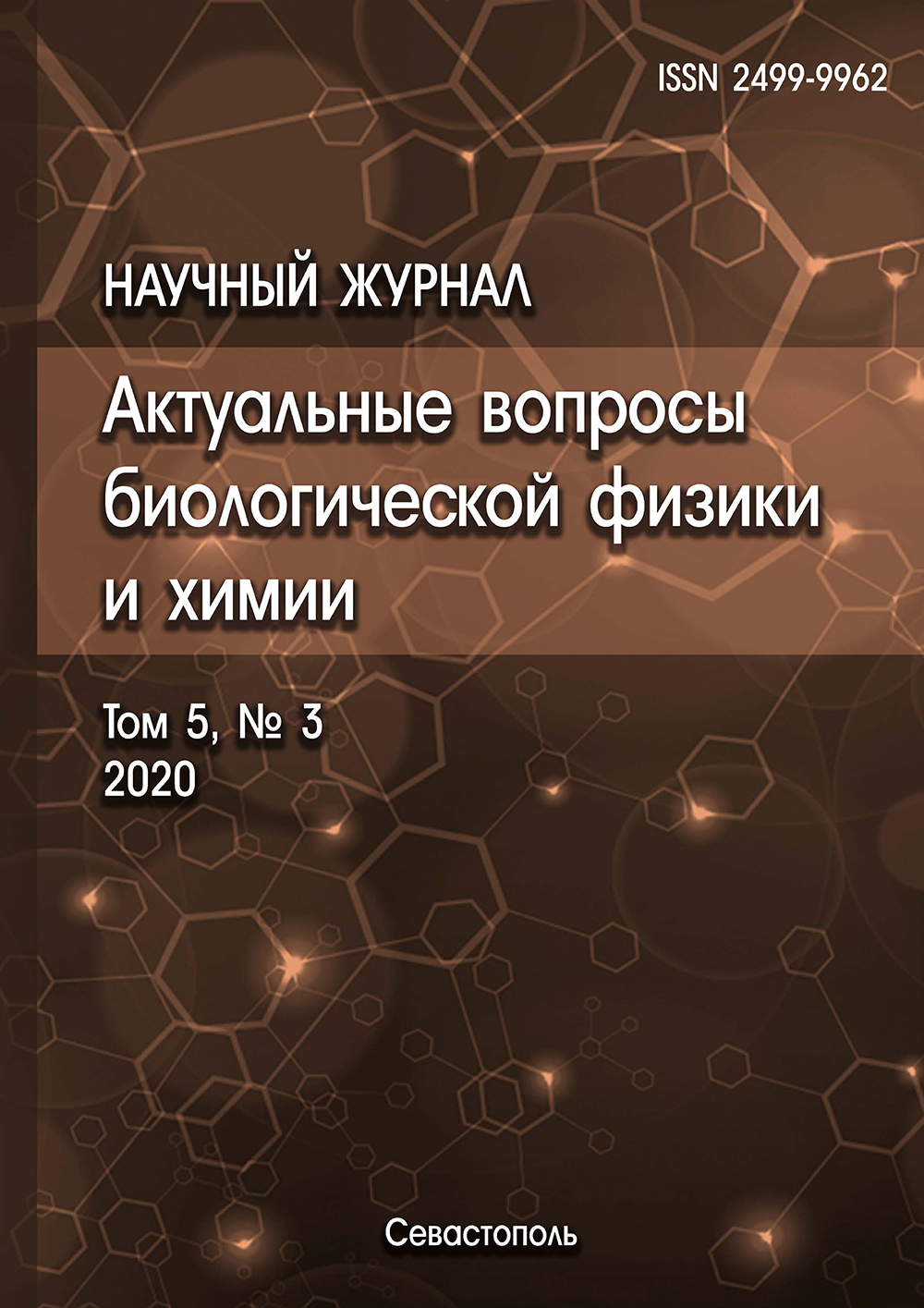N.N. Burdenko Voronezh State Medical University
Voronezh, Voronezh, Russian Federation
Sevastopol State University
Voronezh, Voronezh, Russian Federation
The composition and location of charged and hydrophobic amino acid residues of trypsin from Bos taurus and collagenase from Clostridium histolyticum were studied. The percentage ratio of different types of amino acids on the surface of enzymes was determined. It was established that charged and hydrophobic amino acid residues are distributed unevenly on the surface of the molecules, forming sections of a local cluster. It has been suggested that the most promising carriers for the immobilization of the proteases we studied are hydrophobic polymeric materials, which are likely to interact with one of the sites on the surface of enzyme molecules.
trypsin from Bostaurus, collagenase from Clostridium histolyticum, binding sites, charged amino acid residues, hydrophobic amino acid residues
1. Holyavka M.G., Artyuhov V.G. Immobilizovannye biologicheskie sistemy: biofizicheskie aspekty i prakticheskoe primenenie. Izdatel'skiy dom VGU: Voronezh, 2017, 261 s. EDN: https://elibrary.ru/YLKZJG
2. Mosolov V.V. Proteoliticheskie fermenty. M.: Nauka, 1971, 404 s.
3. Wu P., Weisell J., Pakkala M., Peräkylä M., Zhu L., Koistinen R., Koivunen E., Stenman U., Närvänen A., Koistinen H. Identificationof Novel Peptide Inhibitors for Human Trypsins. Journal of Biological chemistry, 2010, vol. 391, no. 2-3. DOI:https://doi.org/10.1515/bc.2010.030. EDN: https://elibrary.ru/OACHBF
4. Torbica A.M. Advantages of the Lab-on-a-Chip Method in the Determination of the Kunitz Trypsin Inhibitor in Soybean Varieties. Journal of Agricultural and Food Chemistry, 2010, vol. 58, no. 13. DOI:https://doi.org/10.1021/jf100830m.
5. Jesus-de la Cruz K., Alvarez-Gonzalez C.A., Pena E., Morales-Contreras J.A., Avila-Fernandez A.Fish trypsins: potential applications in biomedicine and prospects for production. Journal of3 Biotech, 2018, vol. 8. DOI:https://doi.org/10.1007/s13205-018-1208-0. EDN: https://elibrary.ru/OEVGIO
6. Eckhard U., Schönauer E., Nüss D., Brandstetter H.Structure of collagenase G reveals a chew-and-digest mechanism of bacterial collagenolysis. Journal of Nature Structural and Molecular Biology, 2011, vol. 18, no. 10. DOIhttps://doi.org/10.1038/nsmb.2127.
7. Konon A.D., Petrovskiy S.V., Shamburova M.Yu., Uvarova A.V., Kozlova Yu.O., Grigor'eva M.V., MoskvichevB.V. Osobennosti biotehnologiy klostridial'nyh kollagenaz - perspektivnyh fermentov medicinskogo naznacheniya. Medicina ekstremal'nyh situaciy, 2016, № 2 (56).
8. Hu Y., Webb E., Singh I., Morgan B.A.,.Gainor J.A, Gordon T.D., Siahaan T.J. Journal of Biological Chemistry, 2002, vol. 277. DOI:https://doi.org/10.1074/jbc.M111042200.
9. Balaban N.P., Rudakova N.L., Sharipova M.R. Strukturno-funkcional'nye osobennosti i svoystva metcinkinov. Biohimiya, 2012, t. 77, № 2.
10. Eckhard U., Nu D., Ducka P., Scho E., Brandstetter H. Crystallization and preliminary X-ray characterization of the catalytic domain of collagenase G from Clostridium histolyticum. Journal of Acta Crystallographica Section F: Structural Biology and Crystallization Communications, 2008, vol. 64, no. 5. DOI:https://doi.org/10.1107/S1744309108010476.
11. Bauer R., Jeffrey J., Philominathan S.T.L., Davis D., Matsushita O., Sakona J.Structural comparison of ColH and ColG collagen-binding domains from Clostridium histolyticum. Journal of bacteriology, 2013, vol. 195, no. 2. DOI:https://doi.org/10.1128/JB.00010-12. EDN: https://elibrary.ru/RNAGRB
12. Holyavka M.G., Artyuhov V.G., Sazykina S.M.Issledovanie processov UF-modifikacii svobodnogo i immobilizovannogo tripsina. Radiacionnaya biologiya. Radioekologiya, 2017, t. 57, № 1. DOI: https://doi.org/10.7868/S0869803117010064; EDN: https://elibrary.ru/YIVYTN










